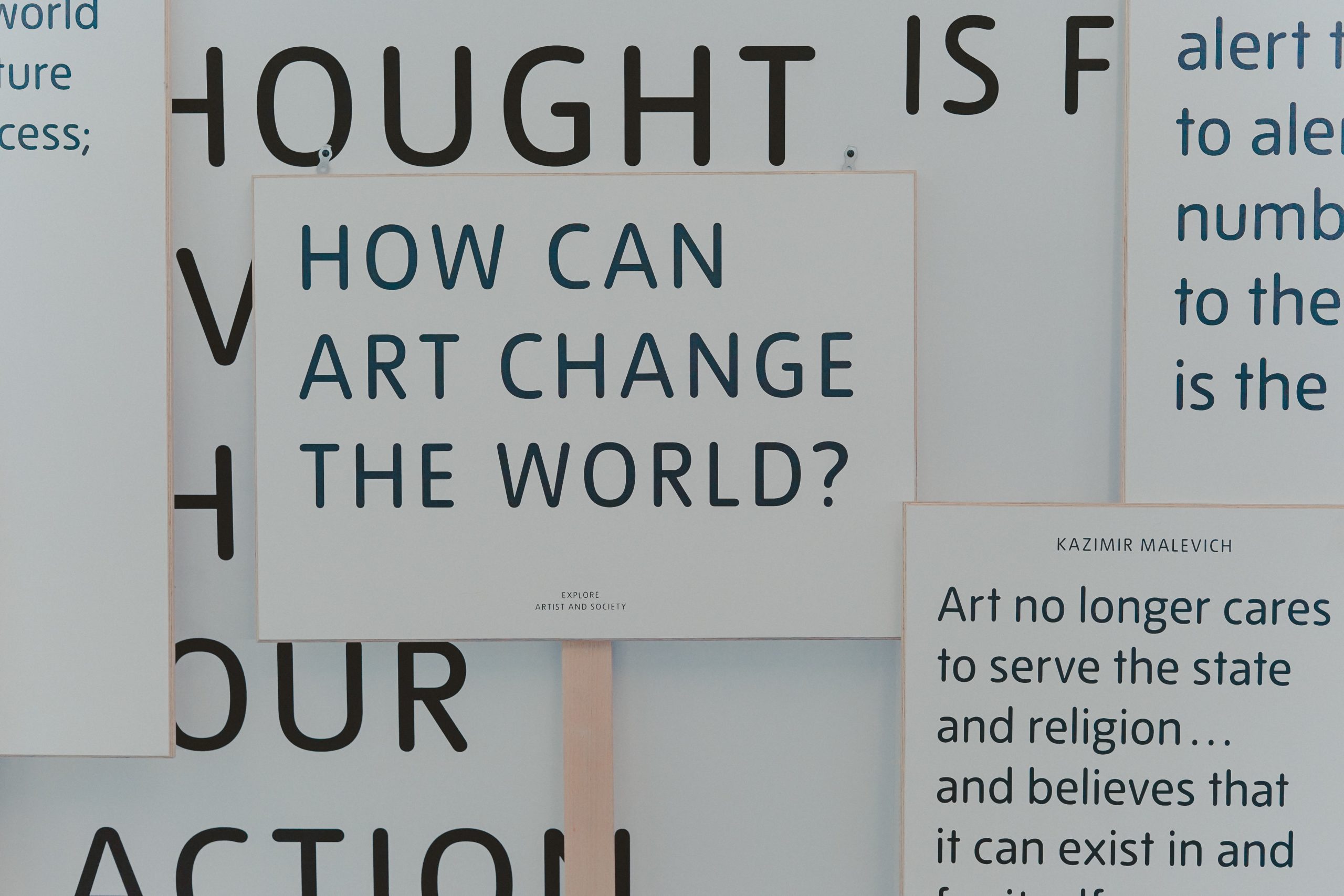[Writer: Freya Bently (she/her)]
[Photo by Toa Heftiba on Unsplash]
The Climate Crisis is the most pressing issue of our time, and Western nations are equipped with the resources to implicate real change for a greener, more sustainable future. Last year, Olafur Eliasson’s Ice Watch came to the Tate Modern, and London was able to watch the effects of global warming in real time. The power of the artwork – created in 2014 – is undeniable, but are institutions doing enough themselves for climate change? As funders and facilitators of expression, and spaces of confrontation and debate, our arts institutions must take the lead in bringing the crisis to the forefront of the UK’s agenda.
The Climate Crisis is a socio-economic issue. This year, Oxfam published a study which found that, on average, after just five days one Briton has used the same amount of carbon dioxide that one Rwandan citizen uses in a whole year. With countries across Africa already suffering from the effects of extreme weather disasters as a result of climate change, there is no excuse for complacency on Britain’s part. Post-Black Lives Matter, Britain’s ugly colonial past is once again in the spotlight, and the UK’s cultural institutions are being forced to confront their dodgy histories. Many museums grew from the personal treasure collections of wealthy colonialists, “collected” at the height of the British Empire, which flourished off the back of the slave trade. The reality is that many of these artefacts were looted or stolen, and our arts, culture and tourism industries have profited off these collections for years, while the countries from which they were taken have struggled to sustain themselves and compete on the world-stage. And even now, although they will be worst-affected by global warming, these countries do not have the funds to develop green initiatives.
What the British Empire and the Climate Crisis have in common is who is to blame, who has profited, and who is therefore responsible. So when national cultural institutions continue sponsorship deals with the likes of BP and Shell, who reportedly knew about the effects of global warming thirty years ago, it doesn’t do the industry any favours. Earlier this year, National Galleries Scotland followed Tate Galleries, The RSC and the National Theatre in cutting ties with big oil investors. Perversely, the British Museum’s current exhibition Arctic: Culture and Climate cashes in on the trend for climate activism while the museum itself remains offensively stubborn in terms of its big oil funding.
Elsewhere, though, fresher institutions are prioritising the issue, even after the blow of Covid-19 on the arts. In Edinburgh’s Royal Botanic Gardens, Inverleith House, the birthplace of the Scottish Gallery of Modern Art in 1960, has been awarded lifeline funding to become ‘Climate House’ – an institution for climate activism within contemporary art. In true sustainable form, ‘Climate House’ will take inspiration from its ecological expert neighbours to “showcase work that encourages conversations about life on earth and expand our understanding of biodiversity and our place in the world.” Their new manifesto for the arts, entitled “By Leaves We Survive” is a brilliant example of how institutions can nurture climate activism through appreciation and engagement with nature itself.
New arts institutions, free of colonial baggage, are able to provoke discourses on art and climate in refreshing and effective ways. Eco/art/scot/land is a newly-established platform which provides resources on art and ecology for members of the art world, and publishes academic material on this subject for use by the industry. Their essays situate art and ecology in the wider context of art history and contemporary art theory, encouraging curatorial endeavours into climate-conscious artists.
As well as that, organisations who wish to convert to a greener business model can find help in Julie’s Bicycle, a trailblazing charity providing creative institutions with the help and advice they need to become cleaner, greener versions of themselves. From developing ‘The Creative Industry Green Tools’ – free carbon calculators used by more than 3,200 organisations worldwide – to working with Arts Council England to reduce the industry’s energy usage by 21% since 2013, Julie’s Bicycle is at the helm of environmental change in the sector. Flexible in its approach, the charity has worked with varying institutions from the National Theatre to the independent record label Ninja Tune, and has developed a Creative Green Certificate programme, which rewards organisations up to five stars for their environmental practice.
Help is clearly available for institutions who wish to prioritise the issue of climate change, and exciting opportunities are being seized by the contemporary arts community all over the UK. However, older institutions risk losing cultural agency if they do not start prioritising humility, accountability and responsibility over profit.

